Pests cunningly exploit concealed entry points like gaps in door frames, windows, roof vents, and utility line passages to invade your home. Regular inspection and sealing of these potential accesses, along with maintaining a clean environment can hamper their intrusion. It's vital to understand that even minor signs such as peculiar odours or unusual noises could hint at an infestation. While immediate action is important, the knowledge and expertise from professionals could substantially fortify your defence against these unwelcome visitors. So, why not further explore these savvy strategies that can transform your home into an impregnable fortress against pests?
Key Takeaways
Pests often infiltrate homes through doors, windows, roof vents, and chimneys; regular inspections can help identify these hidden entry points.
Sealing gaps around utility lines, pipes, and foundations with silicone-based caulk or masonry crack filler can prevent pest ingress.
Maintaining a clean and dry environment, especially in attics, basements, and crawl spaces, helps deter pests by reducing food and moisture sources.
Installing physical barriers like mesh screens over vents and chimneys, and using electric fencing around gardens can effectively keep pests out.
Professional pest control services can provide thorough inspections, tailored solutions, and cost-effective prevention, addressing the quick breeding and resistance issues of pests.
Common Entry Points for Pests
Countless pests can find their way into your home, but they typically enter through common points. Doors and windows are common pest pathways. Check for gaps in frames and screen damage. Confirm door sweeps are intact, and apply caulk to seal frame gaps. Maintain tight window seals and undamaged screens.
Utility lines and pipes offer another route for pests. Seal gaps around pipes and cables and consider escutcheon plates where pipes enter walls. Inspect for signs of wear or damage, particularly after utility work. Verify all utility line openings are sealed and use covers or screens on exposed pipes.
Vents and chimneys should not be overlooked. Install mesh screens over vents and gaps in soffits. Adding a chimney cap or screen can prevent animal entry. Regularly inspect vents, screens, and chimneys for cracks, damage, or signs of animal activity.
Finally, inspect your home's foundation and walls. Fill cracks and gaps with appropriate sealants. Pay special attention to corners, baseboards, and moisture control. Seasonal pest behaviors often increase activity in the warmer months, so regular inspections are key. Confirm attics and basements are tightly sealed, particularly around vents and the foundation. Don't forget about your garage and exterior spaces; unsealed garage doors and gaps in the walls can be invitations for pests (pest invitations).
Unseen Pests' Entry Points
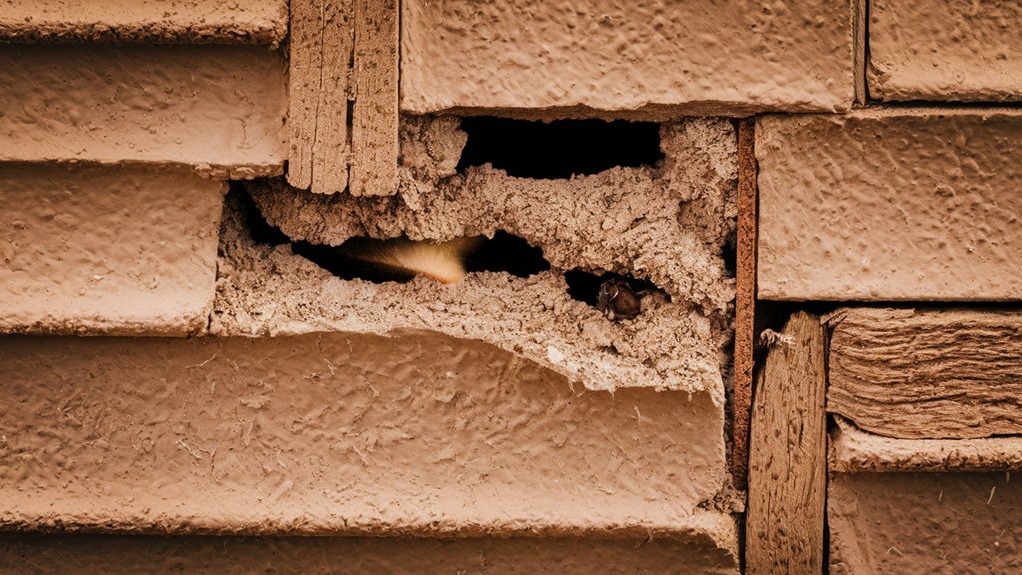
In the battle against pests, understanding their hidden entry points is a considerable advantage. You'd be surprised how often pests, like birds, bats, and possums, find their way into your home through roof vents and chimneys. Consequently, it's crucial to verify these areas are screened and capped. Furthermore, regular inspection of these areas is key to spotting signs of pest activity early.
Utility lines and pipework are another highway for pests, particularly rodents. You can deter them by sealing around utility entry points where they penetrate walls. Consider installing rodent-proof fabric around pipes leading into your home. Also, clearing and removing debris around pipes makes them less attractive to pests.
Foundation cracks are notorious entry points. Small cracks and openings can provide easy access for pests. Regular inspection of your home's exterior and interior for such gaps is required. Use masonry crack filler or silicone-based caulk to seal these cracks and control moisture with a concrete sealer in basements.
Lastly, don't overlook walls and ceilings. Many pests can squeeze into narrow cracks in these areas. Regular cleaning and maintenance can greatly reduce the risk of pest entry. Doors and windows, being primary entry points, are also vulnerable to pest ingress, especially when their fittings become damaged or loose. It's essential to ensure these are kept in excellent condition to prevent any unwanted pests from getting in (damaged fittings allow pest ingress).
Effective Prevention Tips
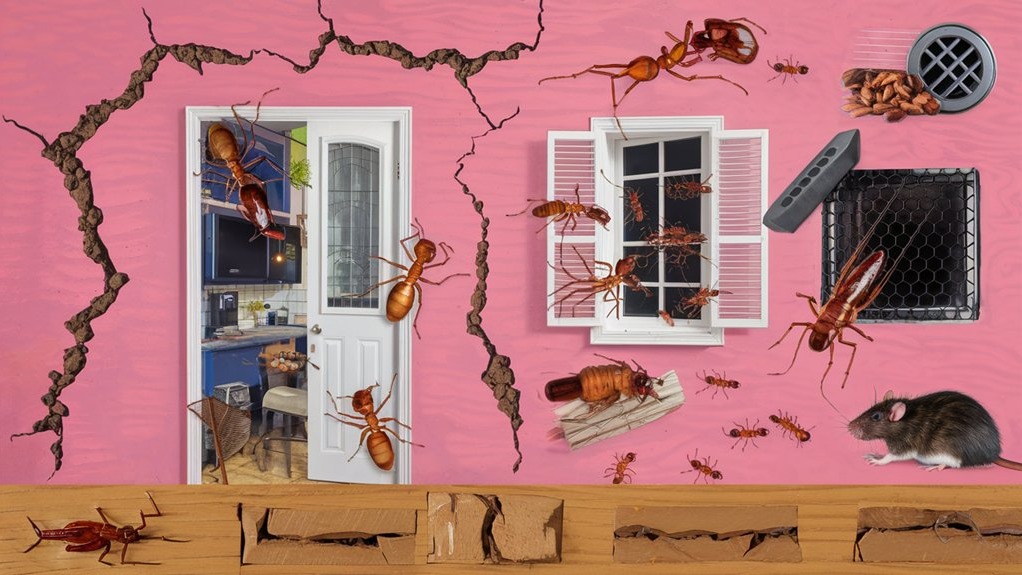
Ever wondered how to effectively prevent pests from invading your home? By employing a few pest proofing strategies and using the right sealing materials, you can keep unwanted critters at bay.
Start by sealing all potential entry points. Fill cracks, holes, and gaps on the outside of your home, including where utilities and pipes enter. Use acrylic latex caulk to seal gaps between trim and siding. Make sure doors and windows are well sealed. Verify your dryer vents are in good condition, and that any large soffit gaps are filled with expanding foam.
Next, focus on yard and exterior maintenance. Trim tree branches and shrubbery away from the house. Store firewood at least 20 feet away from your home and elevated off the ground. Minimize clutter, both inside and outside your home. Protect vegetable gardens and cover your trash cans to deter pests.
Inside your home, keep areas like the basement, attic, and crawl spaces well ventilated and dry. Regularly inspect these areas for signs of pests. Store food in airtight containers and manage moisture to minimize pest attraction.
Also, consider using wire electric fencing around your garden, especially if you're growing sweet corn, to prevent pests from gaining access.
What Attracts Pests?

Without a doubt, what you have in your home can be a beacon for pests. The diverse diet of pests, from crumbs to pet food, can draw them in. They're not picky eaters; spills, unsealed food containers, and even natural fibers are considered food sources. Kitchens that aren't cleaned regularly and garbage accumulation from improper waste management are also likely to attract ants, cockroaches, and rodents.
Pests are also attracted by moisture levels in your home. Standing water from leaky pipes, birdbaths, or poor drainage systems can be enticing. Even something as innocuous as a pet's water bowl can become an attractant if not emptied regularly. Humid areas in your home, such as basements with poor ventilation, are hotspots for pests.
Environmental factors play a role too. Seasonal changes, geographic location, and climate can dictate the kind of pests you'll be dealing with. Structural issues like clutter, cracks, and crevices, poorly sealed windows and doors, and certain building materials can also attract pests. Being aware of these attractants can help you keep your home pest-free. Moreover, the presence of one type of pest could potentially indicate the presence of other pests in your home, as some pests are known to feed on other insects (pest food chains).
Techniques for Home Inspection
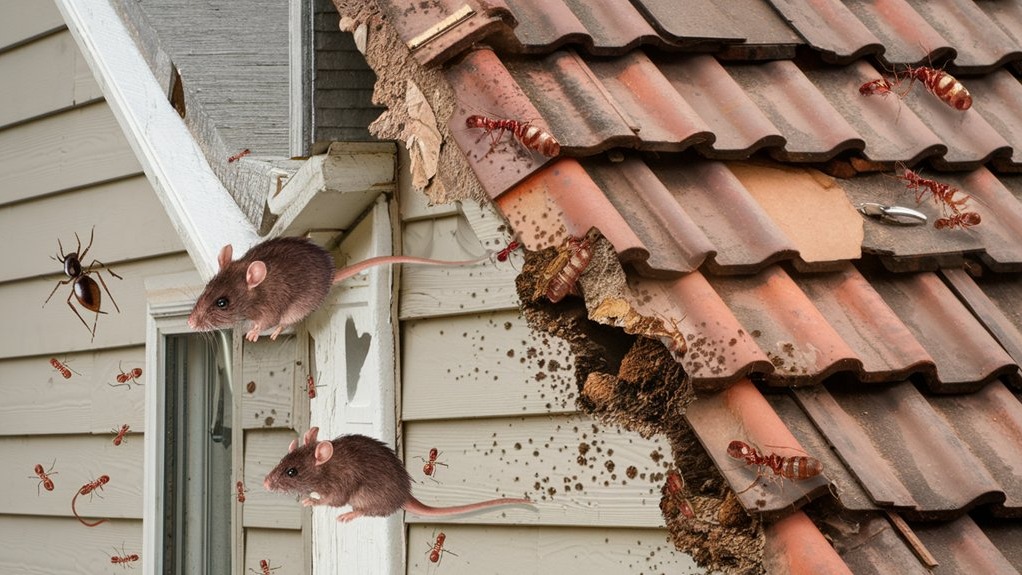
To effectively guard your home against pests, you need to become familiar with home inspection techniques. Your inspection tools should include a flashlight and a camera to document any potential entry points or signs of infestation.
Start your inspection outside. Check the foundation, walls, and roof for cracks and crevices where pests can sneak in. Examine vents and chimneys, ensuring they're screened to prevent pest entry. Inspect around windows, doors, and utility lines for gaps, and survey your yard and garden for signs of pest activity. Over 4 billion email users globally as of 2023 indicates the importance of staying connected and informed about the latest pest prevention solutions online.
Inside your home, focus on walls, floors, baseboards, and trim for gaps. Look around electrical outlets and inspect your kitchen and pantry for signs of pests. Don't overlook the bathroom; leaks or standing water can attract pests. Pay special attention to areas like kitchen cabinets, pantry storage, and hidden corners.
Seasonal checks are key; some pests are more active during certain times of the year. Regular maintenance and sealing potential entry points with caulk, weatherstripping, or expanding foam can help you stay ahead of infestations. Remember, prevention is always better than cure.
Importance of Professional Assistance
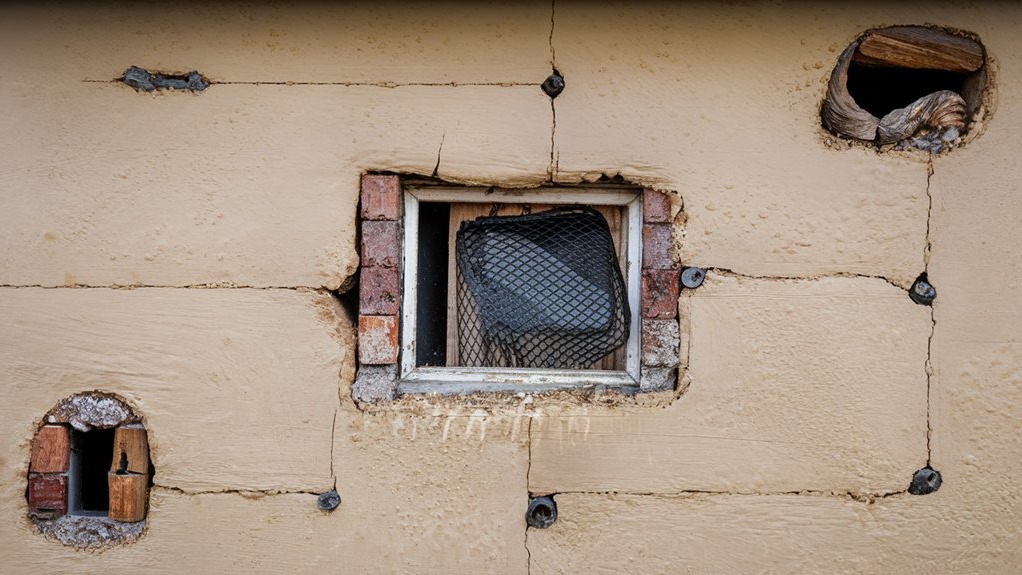
Consider enlisting the help of professionals when dealing with pests in your home. Their professional expertise and deep understanding of pest behavior can be invaluable in resolving infestations effectively and safely. In addition, their extensive knowledge can lead to quicker identification of pest problems, leading to more rapid solutions.
Benefits of Professional Assistance |
Description |
|---|---|
Expert Knowledge and Safe Use of Chemicals |
Pros are trained to handle chemicals safely and understand pest behavior, ensuring your family and pets are protected. |
Effective Solutions and Preventive Measures |
They provide solutions tailored to your specific pest issue, and can suggest preventive measures to stop future invasions. |
Thorough Inspections |
Professionals cover all areas of your home, including hidden entry points, offering a detailed inspection. |
Cost-Effectiveness and Efficiency |
Hiring a professional saves time, money, and effort by eliminating infestations promptly and efficiently. |
Peace of Mind and Extensive Protection |
With a professional at work, you can rest easy knowing your home is protected against various pests. |
Consider enlisting the help of professionals when dealing with pests in your home. Their professional expertise and deep understanding of pest behavior can be invaluable in resolving infestations effectively and safely. In addition, their extensive knowledge can lead to quicker identification of pest problems, leading to more rapid solutions.
Hidden Dangers of Pests Invasion
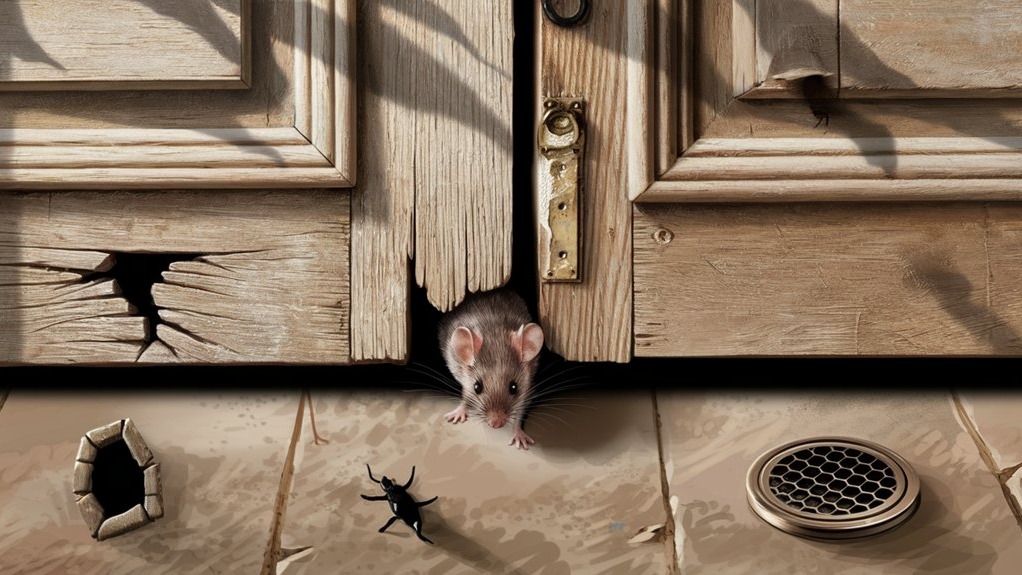
While pests might seem like a mere nuisance, the risks associated with an infestation are far greater and more dangerous. These critters are not just annoying; they pose serious health hazards and can cause extensive damage to your property.
Pests can transmit deadly diseases. Rodents, for instance, spread Hantavirus and Leptospirosis through their urine and droppings, which can lead to severe health problems, even death. Cockroaches and mosquitoes are also culprits, triggering asthma and allergy symptoms or transmitting the West Nile virus, respectively.
The destruction pests cause to your property shouldn't be underestimated either. They can chew through wood, fabric, and electrical wires, creating havoc and potentially causing fires. Termites, in particular, can inflict severe structural damage, reducing your home's value and making it harder to sell.
Lastly, pests breed rapidly, turning a manageable problem into a significant infestation that's difficult to eradicate. By ignoring the issue, you're allowing these creatures to multiply, exacerbating the risk of disease transmission and property damage. If left unchecked, pests can become resistant to pesticides, requiring more extensive treatment plans and making eradication efforts more complicated (pesticide resistance). So, pay attention to peculiar odors, nests, sudden plant damage, unusual noises, and visual signs of pests, as they might indicate an infestation.
Frequently Asked Questions
What Are Some Signs of a Pest Infestation in My Home?
You might have a pest infestation if you find droppings or urine stains around your home. Look out for gnaw marks on furniture and walls too. These signs suggest unwanted critters are hiding somewhere inside.
How Can Pests Affect My Familys Health and Safety?
Pests can seriously impact your family's health and safety by transmitting diseases like Hantavirus and West Nile Virus. Exposure to allergens from pests can trigger asthma symptoms, respiratory problems, and potentially fatal anaphylactic reactions.
How Often Should I Schedule Professional Pest Control Services?
You'll need regular pest control services to maintain a pest-free home. Generally, a quarterly schedule works for most homes, but it can vary based on pest activity, location, and seasonal changes.
Are There Any Natural Methods to Prevent Pests From Entering My Home?
Yes, there are natural methods to deter pests. Use natural repellents like garlic and citrus fruits. Essential oils such as peppermint and lavender work well too. Seal entry points and maintain cleanliness to prevent infestations.
What Types of Pests Are Most Common in My Geographical Area?
You've got regional variations in common pests. In the Northeast, ants and roaches are prevalent. The South battles termites and fire ants, while the West faces termites and scorpions. The Midwest contends with ants and beetles.
Conclusion
Like a fortress under siege, your home can be invaded by pests through hidden entry points. Remember, prevention is better than cure. Regular home inspections, sealing off possible entry points, and maintaining cleanliness are key. But, don't underestimate these tiny invaders; professional help is often necessary. Ignoring them is like sitting on a ticking time bomb; the hidden dangers of pests can explode into serious health risks. Stay vigilant and keep your home pest-free.
 Add Row
Add Row  Add
Add 

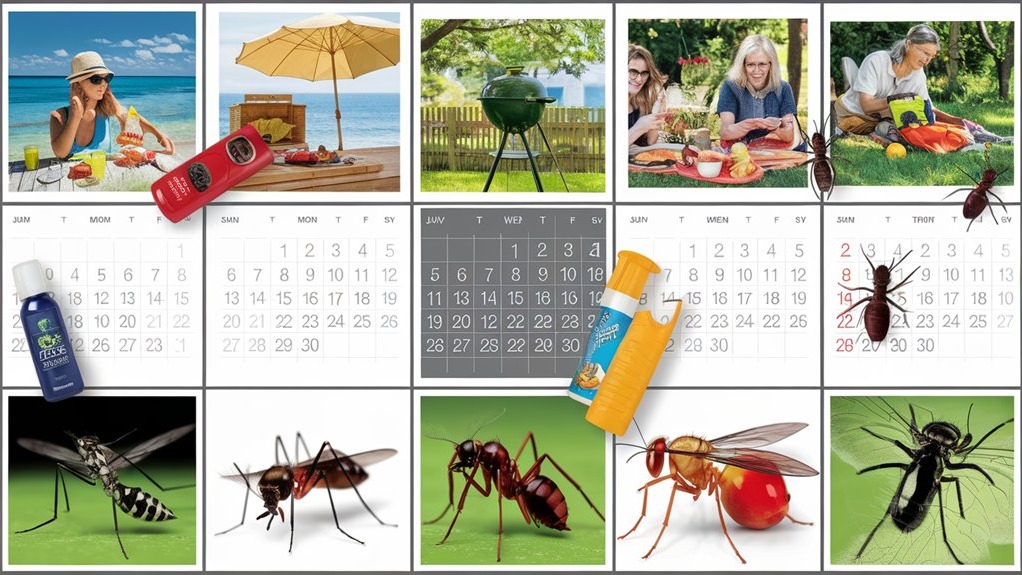

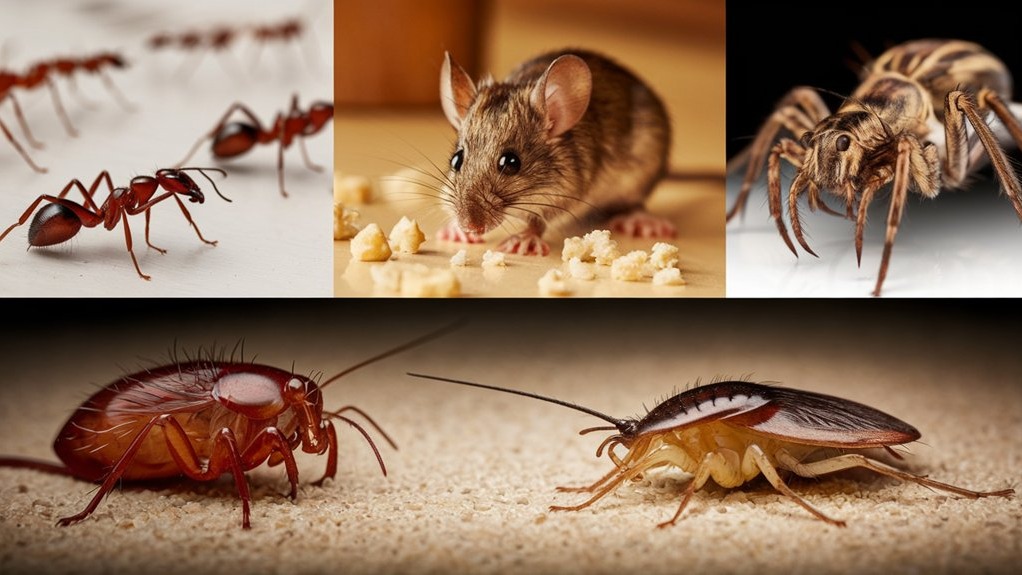
Write A Comment